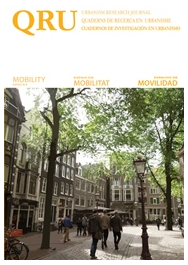Ruas emergentes: tendências morfológicas e processos de transformação
DOI:
https://doi.org/10.5821/qru.9596Abstract
The consolidation of the automobile as a preferential vehicle for the movement of people and goods, linked with fragmented urban growth processes, caused intense transformations on the twentieth century city and its fabric. As an organism, its complexity has increased, the body is composed of a growing number of elements, systems, dynamics and layers, which make it difficult to read and decipher. The high mobility infrastructure axes play an important role in the conservation of some morphological links, affirming themselves as organizing elements of the territory. Its canal space is colonized by a constant urbanization that acquires specific characteristics, defining its own identity. So, from this emerge some linear elements capable of supporting urban fabric and, simultaneously, allowing mobility between distinct parts of the territory. In this sense, the study of the transformation process of these linear elements consolidates their understanding as emerging trends of the Street and contributes to the systematization of a phenomenon improving and creating new mechanisms of an urban production more balanced and conscious of its contemporary paradigms.Downloads
Issue
Section
License
Those authors who have publications with this journal, accept the following terms:
a. Authors will retain their copyright and guarantee the journal the right of first publication of their work, which will be simultaneously subject to the Creative Commons CC BY-NC-ND-4.0 recognition license that allows third parties to share the work provided that its author and its first publication are indicated in this journal, but they cannot be changed or used commercially.
b. Authors may adopt other non-exclusive license agreements for the distribution of the version of the published work (eg: deposit it in an institutional telematic archive or publish it in a monographic volume) provided that the initial publication in this journal is indicated.
c. Authors are allowed and recommended to disseminate their work through the Internet (e.g. in institutional telematic files or on their website) before and during the submission process, which can lead to interesting exchanges and increase citations. of the published work. (See The effect of open access).













